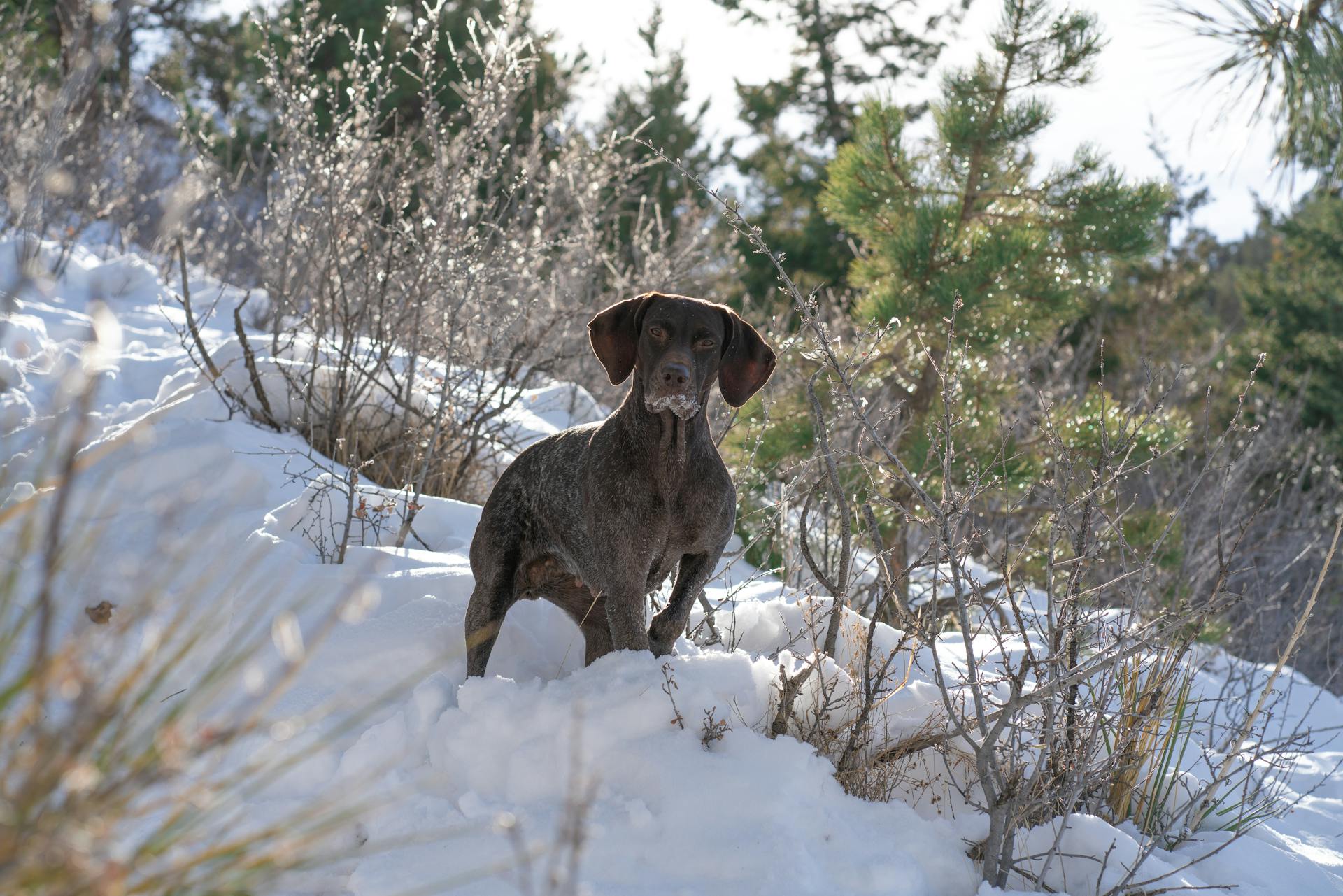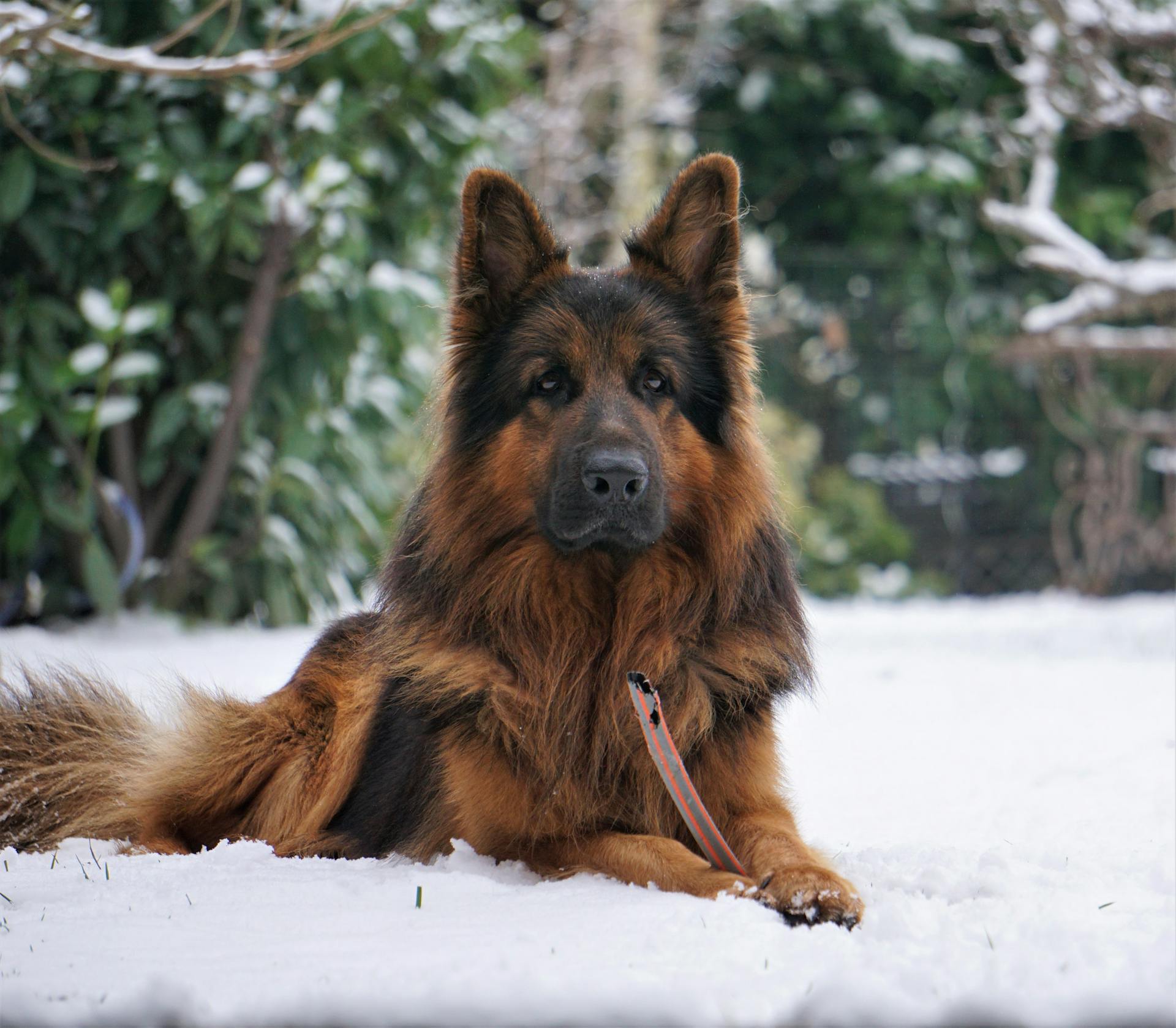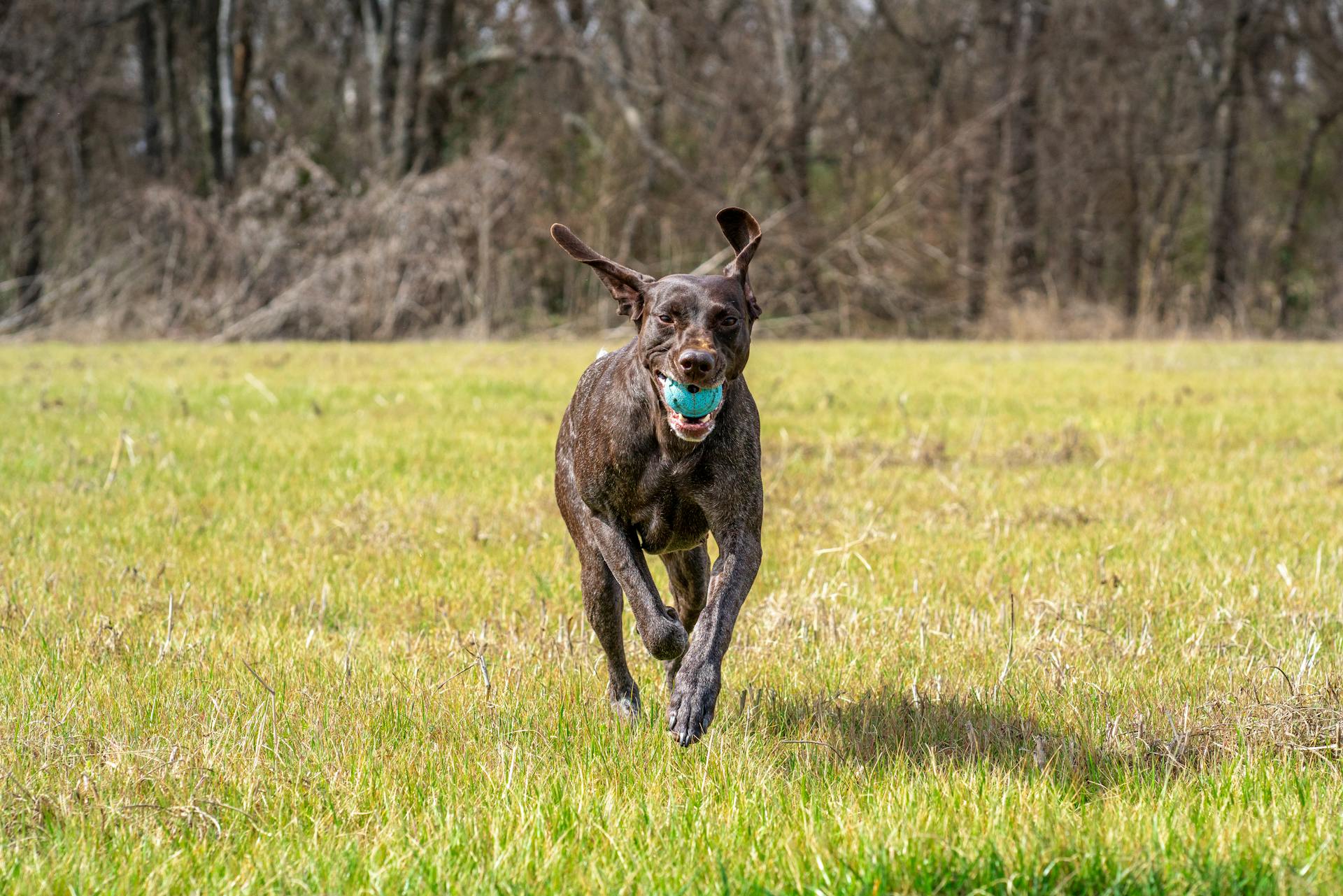
The Kurzhaar is a versatile hunting companion that excels in various environments. They were originally bred in Germany for hunting small game.
Their compact size and short coats make them well-suited for hunting in dense forests and thick underbrush.
The Kurzhaar's energetic and agile nature allows them to navigate challenging terrain with ease.
History of the Breed
The Deutsch Kurzhaar breed has a rich history that spans centuries. It all began with the Old Spanish Pointer, which spread throughout Europe and eventually reached Germany.
The breed's early development was influenced by various bloodlines, including the Hannoverian Schweisshund, the Old German pointer, and the English Pointer. Some sources even suggest that the foxhound was used to slim down the body structure and add speed.
In the 19th century, German hunters sought to create a single versatile breed that could perform multiple tasks, such as finding and pointing upland game, retrieving shot game, and tracking wounded big game. This led to the establishment of the Klub Kurzhaar in the 1870s, with strict regulations and testing systems.
The first known standard for the breed was established in 1879, and the first Deutsch Kurzhaar club, the Braun-tiger-klub, was formed in 1890. The club's name was later changed to the Klub Kurzhaar in 1891.
The breed continued to evolve, with breeders crossing the Deutsch Kurzhaar with black English Pointers in 1907 to address concerns about loss of pigmentation and nose shape. This resulted in the creation of the Prussian Kurzhaar, which was later discontinued due to the low percentage of English Pointer blood.
The breed suffered during World War II, with many white-colored dogs being destroyed due to their perceived lack of camouflage. However, the exchange of dogs between East and West Germany helped the breed survive and continue to flourish.
Consider reading: Deutsch Kurzhaar vs German Shorthaired Pointer
Characteristics
The German Shorthaired Pointer, or GSP, is a medium-sized dog with a dense, short coat that's either brown or black. The coat can be solid-colored, white with colored patches, or roan.
The GSP's head is of moderate size with a convex profile and a strong muzzle perfect for carrying game. The eyes are brown, and the ears are rounded and set high on the head.
The breed's tail can be docked to about half its length, and it's carried roughly horizontally when the dog is moving. The GSP is a tough and healthy dog, with a median longevity of 13.4 years according to a 2024 UK study.
Some genetic predispositions to neurological diseases include coccygeal muscle injury, GM2 gangliosidosis, and pyogranulomatous meningoencephalomyelitis.
Uses
The German Shorthaired Pointer, or kurzhaar, is a dog that's bred to be a jack-of-all-trades. It can work in all types of weather and terrain.
Its versatility in the field is impressive, and it's capable of finding and pointing to game whether it's feathered or furred. This makes it a valuable asset for hunters.
In addition to hunting, kurzhaar's also excel in dog sports like agility and dock diving. They're agile and love to run.
They're also used in law enforcement for nosework, such as detecting illicit substances. This is a testament to their keen sense of smell.
Their ability to follow a blood trail to find wounded game is a crucial skill for hunters. It's a sign of their strong prey drive and tracking ability.
Their retrieving skills are also top-notch, whether they're picking up game in water or on land. This makes them a pleasure to hunt with.
German Shorthaired Pointer
The German Shorthaired Pointer, also known as the Deutsch Kurzhaar, is a beautiful breed. They are known for their stunning appearance.
One of the notable achievements of the GSP is taking top honors at the Westminster Dog Show. This is a testament to their intelligence, athleticism, and trainability.
The GSP is a versatile breed that excels in various activities, such as bird hunting. Their skills in this area are likely due to their strong prey drive and keen sense of smell.
Here are some key characteristics of the German Shorthaired Pointer:
People are often impressed by the GSP's appearance, as seen in the artwork featuring the breed.
Breed Standard and Today
The breed standard for the Deutsch Kurzhaar was first established in 1879, and the first club, the Braun-tiger-klub, was formed in 1890.
The club's name was changed to the Klub Kurzhaar in 1891, and the first field tests under the club were held in 1892. The Klub Kurzhaar also produced the first studbook in 1897.
In 1907, the Deutsch Kurzhaar was crossed with a few black English Pointers, including a female import named Beechgrove Bess from William Arkwright's famous black English Pointers, in an attempt to improve the breed's nose and pigmentation.
Deutsch Breed Standard
The Deutsch Kurzhaar breed standard was first established in 1879, marking the beginning of a long history for this breed.
The first Deutsch Kurzhaar club, the Braun-tiger-klub, was formed in 1890, which later changed its name to the Klub Kurzhaar in 1891.
The Klub Kurzhaar held its first field tests in 1892 and produced the first studbook in 1897, which continued until 1968 when the Deutsch Kurzhaar Verband took over.
In 1907, some breeders crossed the Deutsch Kurzhaar with black English Pointers to address a perceived loss of pigmentation and a need for a higher nose.
This crossing led to the creation of the "Zuchtbuch Preussisch Kurzhaar" section in the breed book, where these black English Pointer to Deutsch Kurzhaar breedings were kept for 10 years until discontinued in either 1934 or 1935.
The breed continued to progress leading up to WWII, with a more set "type" being consistently produced for some time.
Many white colored dogs were destroyed during WWII because some people felt they didn't blend with the forest, among other reasons.
The Deutsch Today
The Deutsch Kurzhaar is a breed that thrives on being close to its master, and is happiest living in and around the home.
This intelligent, calm, and affectionate breed is well-suited for hunting and should be utilized for a variety of tasks. Prior to 1993, it was rare to find Shorthairs in the US and Canada that retained the original qualities of the breed.
The North American Deutsch Kurzhaar Club (NADKC) was formed in 1993 by a group of enthusiasts who aimed to preserve the breed's natural abilities, cooperation, and trainability. Today, the NADKC is one of several regional clubs overseen by the breed's parent club, the Deutsch Kurzhaar Verband.
The NADKC has set its goal to continue the growth of the Deutsch Kurzhaar in North America under the German standards. The club oversees several dozen regional clubs, including the NADKC.
Here are some key tests and results that demonstrate the breed's capabilities:
- Test Calendar: Spring/Fall
- Test Results: Derby, Solms/AZP, VGP, Zuchtschau
Sources
- https://en.wikipedia.org/wiki/German_Shorthaired_Pointer
- https://siurhaart.com/collections/deutsch-kurzhaar-german-shorthaired-pointer
- https://www.nadkc.org/kurzhaars.html
- https://celloscorner.com/2016/02/19/german-shorthaired-pointer-deutsch-kurzhaar/
- https://www.deutsch-kurzhaar.ro/en/deutsch-kurzhaar/compared-standards
Featured Images: pexels.com


